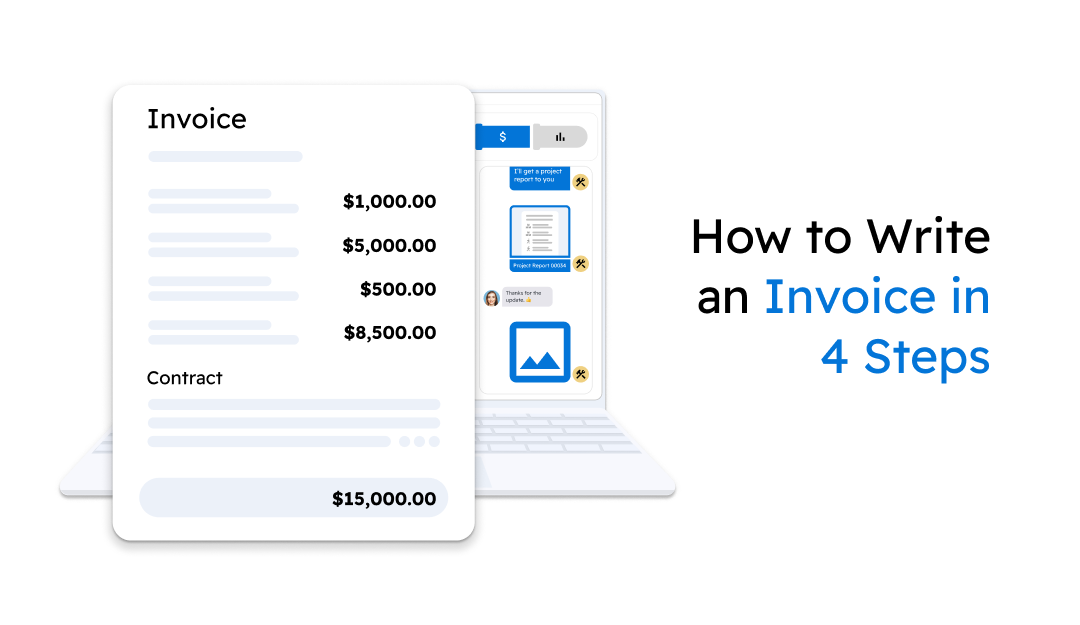How to Write an Invoice in 4 Steps
Invoicing is a fundamental aspect of any business operation, playing a critical role in managing cash flow and maintaining professional relationships with clients. A well-structured invoice not only ensures timely payments but also reflects the professionalism of your business. Here’s a straightforward guide on how to write an effective invoice in just four simple steps.
Step 1: Choose the Right Tool
Begin by choosing an appropriate invoicing tool. Writing invoices on paper and Word documents, or copying data from other systems not only can be difficult but is also very time-consuming. Projul can cut that time down significantly by automatically creating invoices straight from your estimate! These invoices are digital, professional, and help you get paid faster.
Step 2: Include Essential Information
Your Details: Start with your business name, address, contact information, and if applicable, your logo. This information legitimizes your invoice and helps in brand recognition.
Client’s Details: Next, include your client’s name, address, and other contact information. Make sure to double-check these details to avoid any miscommunication.
Invoice Number: Each invoice should have a unique invoice number for tracking and reference purposes.
Date: Include the date when the invoice is issued, and if applicable, the due date for the payment.
Description of Goods or Services: Clearly list the products or services provided, along with a brief description. This should be detailed enough to avoid any confusion about what the client is being charged for.
Step 3: Calculate the Costs
Itemize Services or Products: List each service or product with its corresponding cost. Be clear and precise to avoid any misunderstandings.
Include Taxes and Discounts: Apply any relevant taxes and note any discounts that you’re offering. These should be listed clearly to maintain transparency in billing.
Total Amount Due: Clearly state the total amount due at the bottom of the invoice. This should include all charges, taxes, and discounts applied.
Projul allows you to create an invoice straight from the estimate. This streamlines the process making it much faster and more accurate.
Step 4: Built-in payment processing
Payment Methods: Indicate the accepted methods of payment (e.g., bank transfer, credit card, PayPal).
Payment Terms: Specify the payment terms, including the due date and any late payment fees or policies.
Additional Information: Include any other relevant information such as a thank-you note, a reminder for future business, or customer service contact details.
Projul offers built-in payment processing which allows you to collect credit cards and bank transfers directly from your customer, on the invoices you send. Say goodbye to chasing checks and unnecessary back and forth from customers when trying to collect payment. Sending invoices through Projul is a one-stop-shop for customers to see and pay invoices.
Conclusion
Writing an invoice doesn’t have to be a daunting task. By following these four simple steps, you can create clear, professional, and effective invoices that facilitate prompt payment and reflect positively on your business. Remember, the key to a good invoice is clarity, completeness, and a touch of professionalism. By ensuring these elements are present in your invoices, you maintain a smooth financial workflow and foster strong client relationships. Using Projul can make this process so much easier and faster and will ensure that you have completed each of these steps. Check out Projul’s Invoicing page to learn more.
